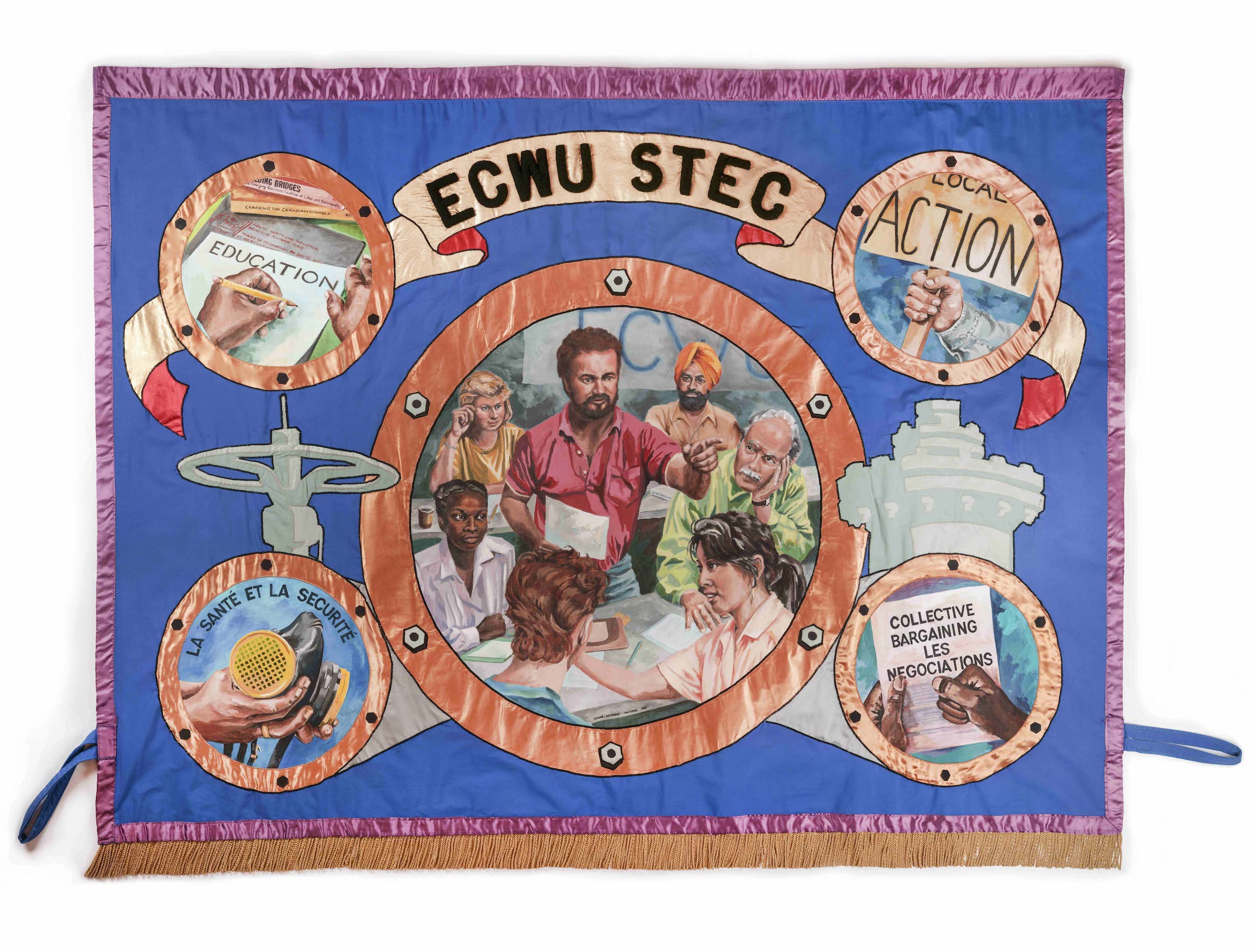Every year on the first weekend of September, millions of Americans flock to beaches and barbeques to soak up the last bits of summer, taking advantage of the country’s annual observance of Labor Day. While many may see the federal holiday as the last three-day weekend before the fall, the longstanding tradition has deep significance that traces back to one the bleakest chapters of American history, when dangerous conditions, insufficient pay, and discriminatory treatment were widespread across industries, forcing workers to band together and unionize in order to fight for their rights.
The United States labor movement also saw a creative outpouring in the form of union banners. Displayed at marches, strikes, meetings, and other union efforts, these emblems were used to identify individual groups and convey specific values centered around fair wages, protest, and collective struggle.
One of the country’s oldest union banners is currently held at Cornell University’s Kheel Center for Labor-Management Documentation and Archives. Presumably dating back to 1887 based on an embroidered inscription, the banner is a two-sided, hand-stitched silk emblem from one of the earliest garment industry unions still in existence, the New York Journeymen Tailors Protective and Benevolent Union.
“As this union was formed during the Civil War, they likely chose to include symbols of patriotism, including the American Eagle and an olive branch to symbolize peace,” Kheel Center Archivist Steven Calco told Hyperallergic.
Many of the banners from the early 1900s in the library’s collection tend to be bright red, reflecting the waves of socialist values that were then spreading throughout Europe and trickling into the US with the influx of Eastern European immigrants, many of whom ended up working in garment factories in New York and across the country.


“You will often see tools of the trade within early union banners: scissors, hammers (especially with the influence of communism with the hammer and sickle), sewing machines, and other symbols of labor,” Calco said.
These designs contrasted with the biblical and Classical imagery frequently featured in trade union banners from the United Kingdom at the time, the majority of which were produced by artist and business owner George Tutill. A landscape painter, Tutill ran a popular workshop manufacturing hand-painted silk banners and regalia for unions and social groups in the 19th century. Today, many of these works can be found in Manchester’s People’s History Museum, which has a collection of more than 450 historic and contemporary banners, including what’s billed as the oldest one in the world, the 1821 Tin Plate Workers Society banner created by William Dixon for the coronation of King George IV.

“While early banners from North America contained mostly text and limited symbolism, banners from the UK were pictorial, depicting narrative scenes of the workplace, sometimes combined with nationalist and religious symbols,” Tara Bursey, executive director of Canada’s Workers Arts and Heritage Centre (WAHC), told Hyperallergic.
Although this elaborate style was most popular in the UK, there is evidence of its influence across the pond, such as in a work representing the Energy and Chemical Workers Union (now UNIFOR) made by the visual artist couple and longtime labor banner makers Karl Beveridge and Carole Condé. Like some early UK banners, the display features a large narrative scene with isolated smaller parts to spotlight specific values and initiatives, Bursey noted.
“In this case, they chose to highlight health and safety, the right to collective bargaining, and education as core values of the union,” she said.
A long time labor activist who helped found WAHC, Condé recently died on July 19 at the age of 84. Today, her work with Beveridge can still be viewed alongside other labor banners in an ongoing virtual exhibition. An expansion of the 2019 show of the same name, All Together Now! is on view until December 21.






